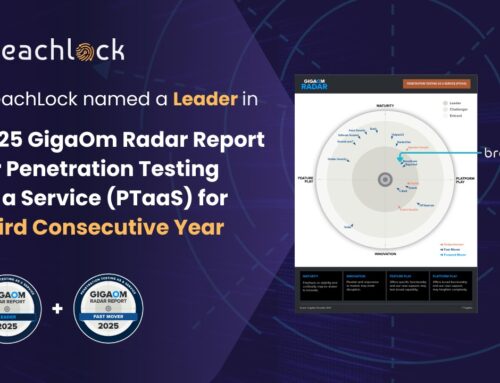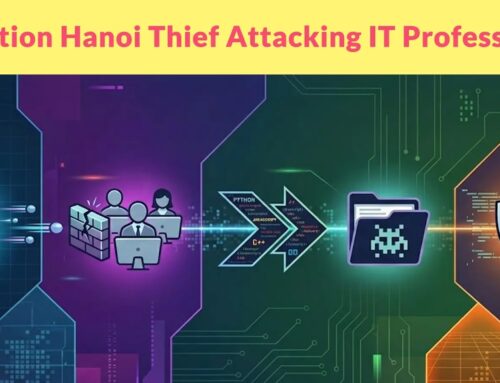
Mustang Panda Using New DLL Side-Loading Technique to Deliver Malware
Mustang Panda’s Stealthy Shift: Unpacking Their New DLL Side-Loading Tactic
The cybersecurity landscape is a constant arms race, and threat actors are perpetually refining their methodologies to evade detection. Recently, a significant shift has been observed in the tactics of the notorious advanced persistent threat (APT) group, Mustang Panda. Known for its sophisticated operations, this group has resurfaced with a novel and concerning DLL side-loading technique to deliver its malicious payloads. This development demands immediate attention from security professionals, as it represents a concerning evolution in their operational capabilities and a greater challenge for traditional defenses.
The Latest Campaign: Politically Themed Lures and Deceptive Execution
Beginning in June 2025, Mustang Panda launched a new campaign targeting Tibetan advocacy groups. This highly focused approach highlights their continued interest in politically motivated intelligence gathering. The attack vector is particularly insidious: victims receive a ZIP archive, carefully crafted to appear innocuous. Within this archive lies a deceptive executable named Voice for the Voiceless Photos.exe. This decoy promises legitimate content, but its true purpose is far more sinister.
The malicious payload delivery relies heavily on a new DLL side-loading technique. Instead of a direct malicious executable, the decoy loads a legitimate application, which then, in turn, loads a malicious DLL. This technique allows the threat actors to bypass many conventional security measures that might flag the initial executable as suspicious. The legitimate application acts as a Trojan horse, unwittingly paving the way for the malware.
Understanding DLL Side-Loading: A Primer for Defenders
DLL side-loading is a deceptive technique that capitalizes on how Windows applications search for and load Dynamic Link Libraries (DLLs). When an application needs a specific DLL, it follows a predefined search order (e.g., the directory where the application is loaded, system directories, etc.). Threat actors exploit this by placing a malicious DLL with the same name as a legitimate one in a position where it will be loaded before the authentic library. This allows the malicious DLL to execute its code within the context of a trusted application, often with elevated privileges, making detection significantly harder.
In Mustang Panda’s latest campaign, the novelty lies in the specific legitimate application chosen for side-loading and potentially new methods of ensuring their malicious DLL is loaded first. This adaptability is a hallmark of sophisticated APT groups.
Remediation Actions: Strengthening Your Defenses Against DLL Side-Loading
Addressing the threat of DLL side-loading requires a multi-layered approach. Organizations must implement a robust security posture to mitigate the risks posed by sophisticated threat actors like Mustang Panda.
- Endpoint Detection and Response (EDR) Systems: Deploy and configure EDR solutions to monitor process creation, DLL loading, and suspicious API calls. Advanced EDRs can detect anomalous behavior indicative of DLL side-loading.
- Application Whitelisting: Implement application whitelisting solutions to prevent unauthorized executables and DLLs from running. This is a highly effective control against unknown or malicious binaries.
- Regular Security Awareness Training: Educate users about the dangers of spear-phishing and politically themed lures. Emphasize the importance of verifying sender identities and exercising caution with unsolicited attachments, especially ZIP archives.
- Network Segmentation and Least Privilege: Segment networks to limit lateral movement and enforce the principle of least privilege for all users and applications. This reduces the impact of a successful compromise.
- Patch Management: Maintain a rigorous patch management program for all operating systems and applications. While DLL side-loading isn’t always a vulnerability in itself, unpatched software can open other avenues for exploitation.
- Threat Intelligence Integration: Subscribe to and integrate threat intelligence feeds, particularly those addressing APT groups like Mustang Panda, to stay informed about their evolving tactics, techniques, and procedures (TTPs).
Tools for Detection and Mitigation
Leveraging the right tools is crucial for identifying and mitigating threats that employ DLL side-loading techniques. Here’s a selection of valuable resources:
| Tool Name | Purpose | Link |
|---|---|---|
| Sysmon | Advanced system monitoring, including DLL load events. | https://learn.microsoft.com/en-us/sysinternals/downloads/sysmon |
| Process Monitor | Real-time file system, Registry, and process/thread activity monitoring. Essential for analyzing DLL loading. | https://learn.microsoft.com/en-us/sysinternals/downloads/procmon |
| Autoruns | Displays programs configured to run during system startup or login, including DLLs. | https://learn.microsoft.com/en-us/sysinternals/downloads/autoruns |
| Microsoft Defender for Endpoint | Comprehensive EDR solution with advanced threat detection capabilities, including behavioral analysis. | https://www.microsoft.com/en-us/security/business/threat-protection/microsoft-defender-for-endpoint |
| Splunk (with Security Essentials) | SIEM platform for log aggregation and analysis, enabling correlation of security events. | https://www.splunk.com/ |
Conclusion: Staying Ahead of Evolving APT Tactics
The latest campaign by Mustang Panda underscores the persistent and adaptable nature of state-sponsored threat actors. Their shift to a new DLL side-loading technique, coupled with carefully crafted social engineering lures, demonstrates a continued commitment to evading modern security controls. For security professionals, a proactive stance is not merely recommended, but essential. By understanding these evolving tactics, implementing robust security measures, and fostering a culture of cybersecurity awareness, organizations can significantly enhance their resilience against sophisticated attacks and protect sensitive information from falling into the wrong hands.





